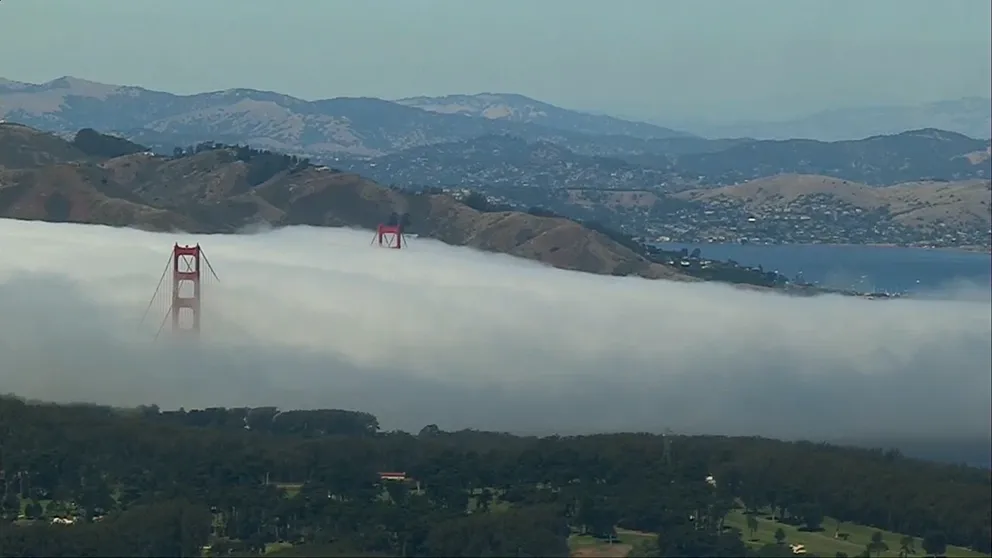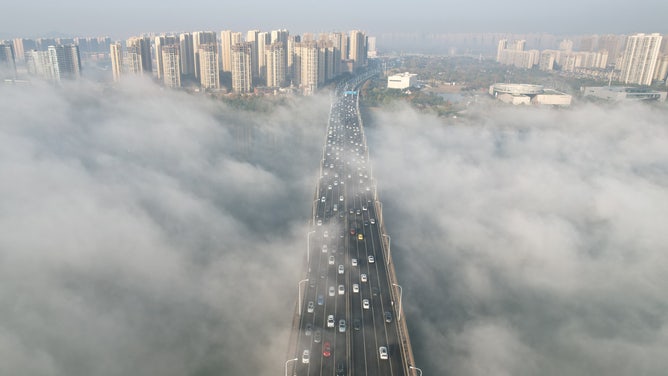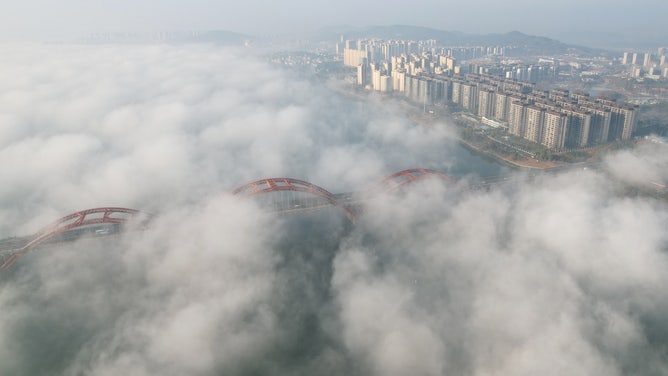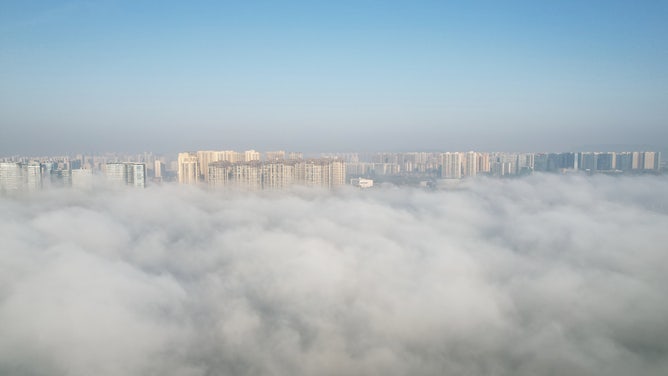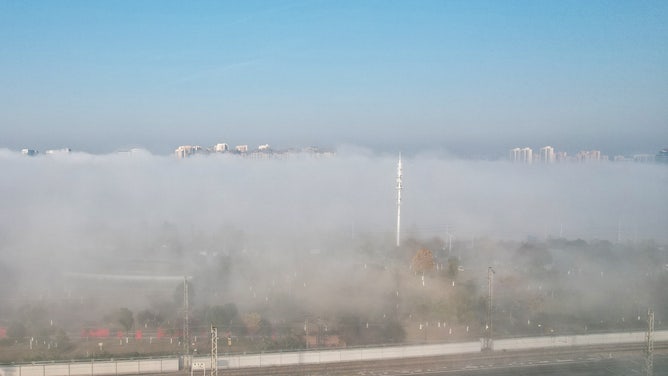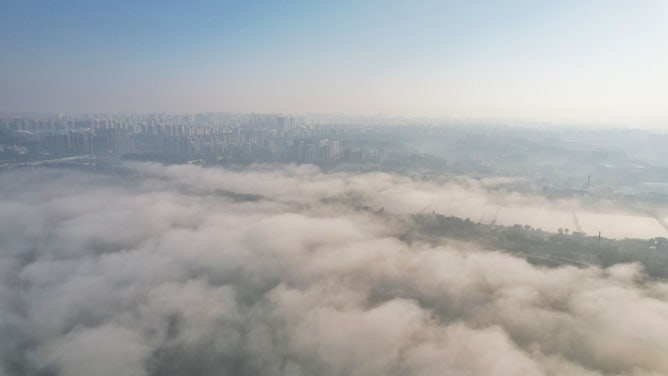Photos: River of fog engulfs bridge in China
Officially, the fog dropped visibility in the city down to about 3 miles at times. Photos showed much denser patches of fog over the river under blue skies.
5 peaceful shots of dense fog
Relax as you watch 90 seconds of dense fog move across the horizon.
CHANGSHA, China – Commuters struggled through a river of fog Monday that shrouded Changsha, Hunan Province, despite the dreamy look from above.
Some cars on the bridge managed to stay above the fog as the condensation packed the area below the raised portion. Officially, the fog dropped visibility in the city down to about 3 miles at times. Photos showed much denser patches of fog over the river under blue skies.
China Weather also issued a smoke advisory for the province. That accounts for some of the haze. The particles making up the haze can also act as condensation nuclei – a water vapor magnet – for the fog.
DOES FOG REALLY BURN OFF? DISPELLING THE MYTH OF COMBUSTIBLE CLOUDS
What is fog?
Fog and haze are very different. Fog is a cloud on the ground or a visible collection of water and/or ice particles that form when water condenses, according to NOAA.
"(Haze is) a suspension of extremely small, dry particles in the air, not water droplets," stated the U.K. Met Office. "These particles are invisible to the naked eye, but sufficient to give the air an opalescent appearance."
Fog and haze in the area are very common in the fall and winter in Changsha, according to researchers.
For fog to form, the air at the surface must be cooled to the dew point – that’s the temperature at which the water vapor in the air condenses into droplets. It’s the same process that happens above the surface for the clouds floating above our heads.
Another factor that helps with the formation of fog is light winds. Breezes mix the air at the surface with air above it and usually prevent the formation of fog. In general, the more stagnant the air, the more likely it is for fog to form.
